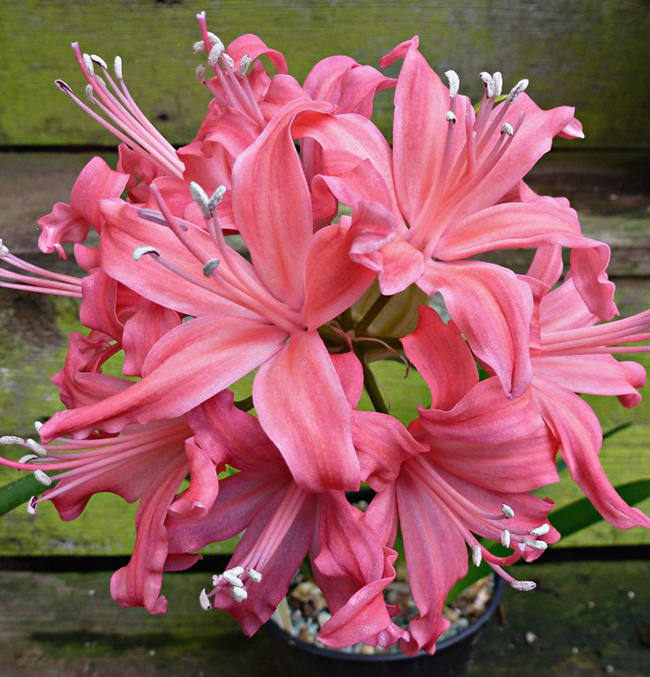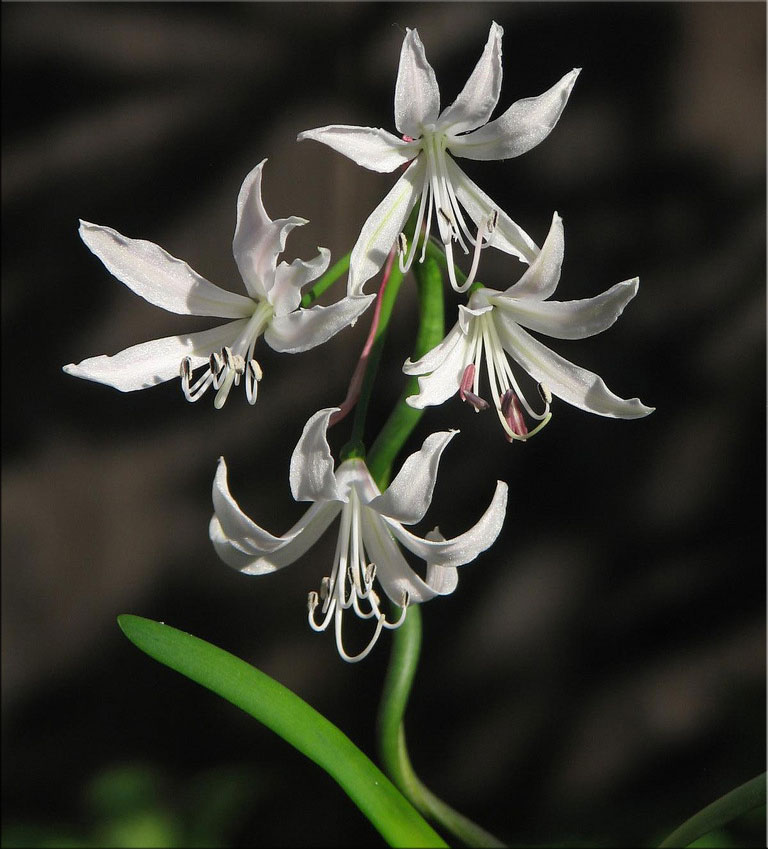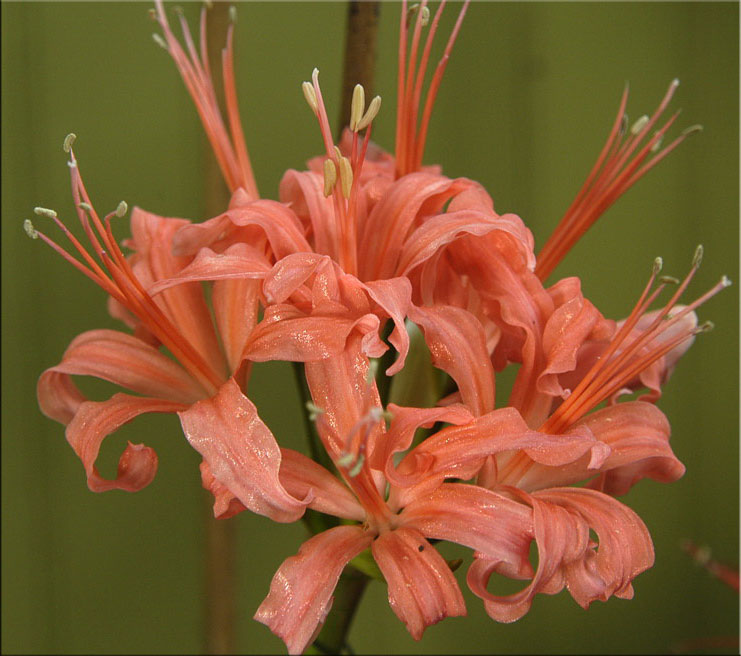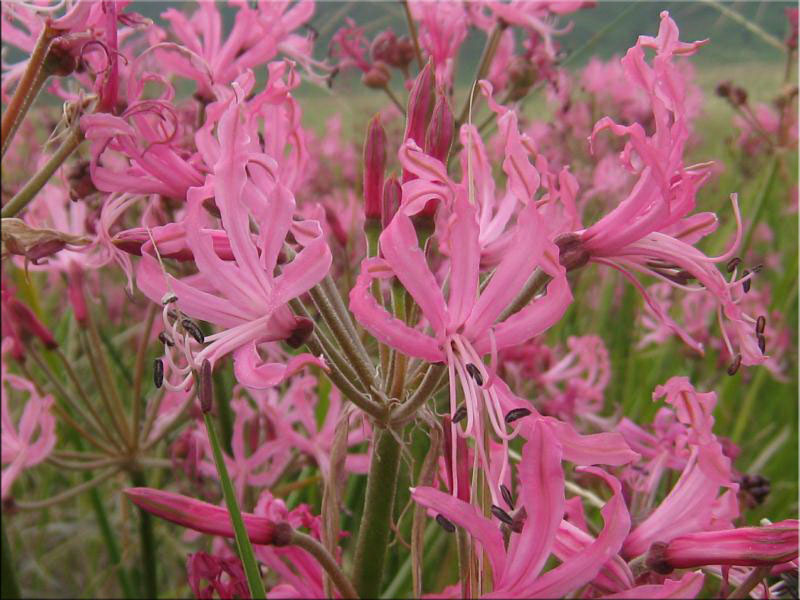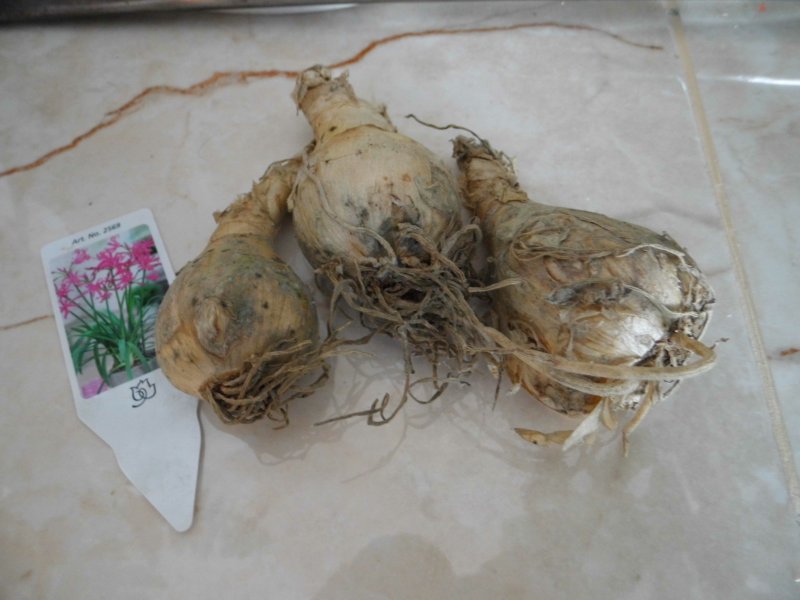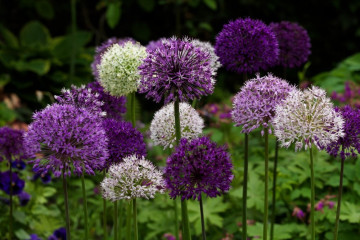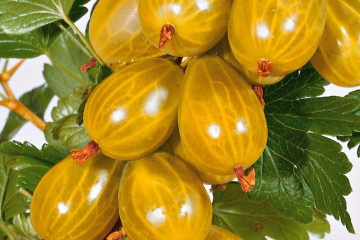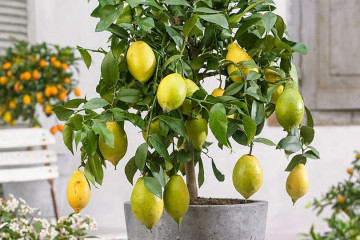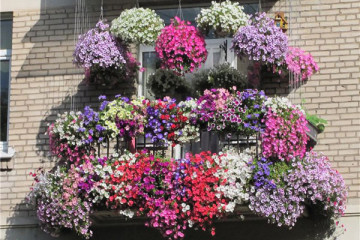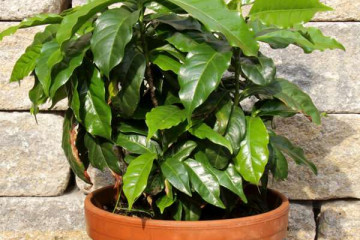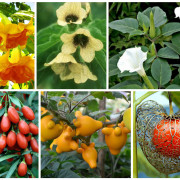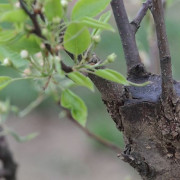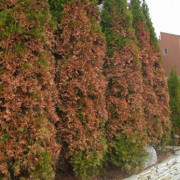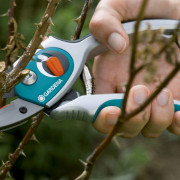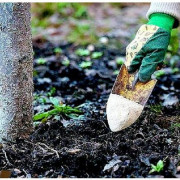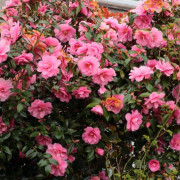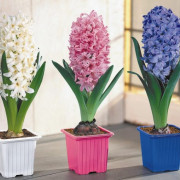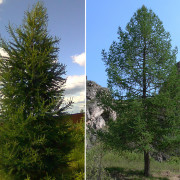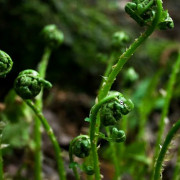Nerine: planting and caring for a plant for successful cultivation
Content:
Lovers of unusual-looking, but unpretentious plants often do not know which specimens to replenish their collection of flowers. Some representatives of the flora are too capricious, others are very widespread and have already become commonplace. In this case, you should pay attention to nerin (planting and leaving are described in the article).
general description
Nerine, she is a spider lily or a lily of Guernsey, is a representative of the Amaryllis family. The perennial is also known as the Cape Flower and the Night Nymph. The birthplace of exotic is South Africa.
It is a highly decorative plant with linear dark green leaves. At the time of flowering, a long peduncle appears on it, topped with funnel-shaped buds. The color of the thin, curved petals of a spider lily depends on the type of plant. It can be either bright scarlet or dazzling white. You can admire the flowers in autumn, from September to October.
The underground part of nerine is represented by a bulb, the diameter of which reaches 5 cm.
Main types
There are about 3 hundred species of spider lilies. Of these, several main ones can be distinguished, the most interesting for growing:
- Nerine Bowden (nerine of the species bowdenii). A plant with belt-like leaves of a rich green color, reaching a length of 25-35 cm, a width of 2-3 cm. Peduncles are crowned with umbrella-type inflorescences with curved petals, presented in various shades of lilac color. Nerina Bowden (cultivation and care is described below) is the most popular type of plant.
- Nerina is winding. A variety rarely grown at home. Differs in graceful flowers of a pale pink shade.
- Nerina is bashful. The owner of beautiful snow-white flowers with thin curved petals. The leaves of this species are slightly bluish.
- Nerina is narrow-leaved. As the name implies, the species has a special leaf shape. The flowers are delicate, graceful, delicate lilac tone.
- Nerine sarneiskaya. An interesting species of spider lily with large orange-red flowers.
- Nerina is wavy. The owner of flowers (8-10 pieces per peduncle) with twisting, as if bitten, petals of a delicate pink color.
- Nerina Hutton. The small size of pale pink flowers of this species is more than compensated by their abundance.
- Nerine is curved. Actively growing, even during flowering, lily, with bright scarlet graceful flowers.
- Nerina is low. The peculiarity of this plant is that it begins to grow leaves simultaneously with the growth of peduncles. Spider lily petals are pink, beautifully curved.
It is recommended to grow this species at home as a decorative one, without transplanting it into the ground.
Home care
Growing and caring for nerina is pretty simple. Despite its African origin, the flower takes root well in the Russian climate.Winter hardiness even allows the plant to remain outdoors all year round, when it comes to southern growing regions.
Air humidity
Spider lily loves moist soil, but prefers dry air. Therefore, pallets with water, wet towels and other tricks of flower growers will not be required for her.
Temperature
It is worth talking about the growing temperature in more detail, since this factor affects flowering.
The transition to the dormant period in the spider lily is not clearly expressed. The flowers wither, and the green mass remains bright and juicy until spring, when it begins to fade slowly. However, the real signal of the approaching dormant period is considered to be flowering.
From this moment, watering is reduced, after the leaves die off, the container with the bulb is removed to a dark place with a temperature of 7-10 ° C. It can be a glazed loggia or a dry basement. Some growers leave the lily to "sleep" on the bottom shelf of the refrigerator.
Low (within the specified limits) temperature is very important. If the wintering is too warm, the plant will begin active growth earlier, in which case it will not produce flowers.
In the spring, the pot with the bulb is removed from the shelter, exposing it to the light. The temperature should remain the same. In the north, a loggia or window sill in a cool room is considered a good place. Residents of the southern regions, where the temperature in March is stable at + 5 ° C, can put the container outside.
In April, the Guernsey lily will wake up and begin to grow leaves. Then the flowering period will come, which will again be replaced by a dormant period.
Fertilizers
During the period of growing green mass and flowering, the spider lily is fed with complex fertilizers for flowering indoor plants. The frequency of application is once every 10-14 days.
Watering
During the period of growth and flowering, watering should be carried out regularly to prevent the earthen coma from drying out. When the nerine has faded, you can water it less often. Even less water is required when the leaves die off. When the aerial parts of the flower disappear, the earth no longer needs to be moistened.
Plant transplant
Nerina does not need an oversized pot for transplanting. A diameter of 10-13 cm is enough. Planting in a large container helps to slow down the growth and development of a spider lily. Too much soil is also not required - the plant bulb should be buried only two-thirds.
The purchased bulbs should be repotted in August. At the same time, the soil in the pot is only slightly moistened so as not to cause an activation of growth.
The spider lily does not require frequent transplants; instead, the upper part of the soil is replaced annually. It is recommended to completely replace the soil in the pot once every 4 years. To do this, you can either purchase ready-made soil for amaryllis, or prepare a soil mixture yourself from turf soil, humus and sand, taken in equal parts.
Do not forget about drainage - stagnant water in the bulb can provoke decay.
Reproduction methods
Like other bulbs, nerine reproduces by dividing daughter bulbs. This method is quite common and not difficult. In this way, young plants can be obtained once every 4 years.
How to plant young bulbs:
- The bulb of the old plant is carefully removed from the soil;
- Carefully separate the young bulbs that have grown around;
- Drainage (tree bark, small pebbles) and soil mixture are poured into new small-diameter pots;
- The bulbs are carefully buried (no more than 2 in each pot) 2/3 into the ground;
- Lightly tamp and slightly moisten the soil in the pot with water.
Seeds
Seed propagation of nerine is not a suitable method for beginners. It is more laborious and complex than dividing with bulbs.
How to grow nerine from seeds:
- Wait until the seeds ripen on an adult plant;
- Find a small container and fill it with nutritious potting soil;
- Mix the seeds with clean coarse sand and scatter over the surface of the soil;
- Moisten them thoroughly using a spray bottle;
- Cover the planting with a film, creating greenhouse conditions;
- Every day, before the emergence of shoots, it is necessary to take care of the plantings: water and ventilate, removing the film. The optimum temperature for germination is 22 ° C;
- After 22-23 days, the first shoots will appear. The film can be removed;
- After the seedlings have 2 leaves, they need to be dived into small pots and removed for growing in a place inaccessible to drafts and direct sunlight;
- The first 3 years of life, young plants do not need a period of winter dormancy, they are not placed in the cold after flowering.
Nerina is a flower that has its own whims. Caring for him cannot be called too difficult. It is enough to clean the plant in time for the winter, providing it with peace, and observe the watering regime. Then the extraordinary lily will respond with abundant flowering and a magical aroma. It can not only be boldly demonstrated to neighbors by taking it out into the street, but also shared with bulbs for planting.

